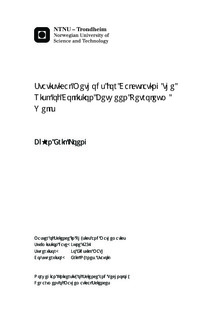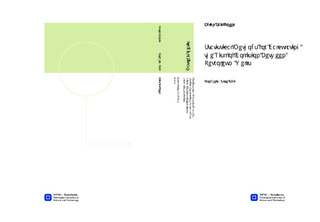| dc.contributor.advisor | Eidsvik, Jo | nb_NO |
| dc.contributor.advisor | Nyrnes, Erik | nb_NO |
| dc.contributor.author | Loeng, Bjørn Erik | nb_NO |
| dc.date.accessioned | 2014-12-19T13:59:54Z | |
| dc.date.available | 2014-12-19T13:59:54Z | |
| dc.date.created | 2012-11-08 | nb_NO |
| dc.date.issued | 2012 | nb_NO |
| dc.identifier | 566456 | nb_NO |
| dc.identifier | ntnudaim:7918 | nb_NO |
| dc.identifier.uri | http://hdl.handle.net/11250/259053 | |
| dc.description.abstract | In this thesis we explore several statistical methods for addressing the risk of collision between two petroleum wells. Such a collision is a potentially dangerous but rare event that can occur in situations with directional drilling. In order to extend the usual approach of only considering the two closest points in the two wells in the collision risk calculations, we obtain a joint statistical distribution for the position coordinates of all the survey points in two neighboring wells.The common practice in the petroleum industry today is to use the two closest points in a hypothesis test, in order to make a conclusion on whether we should drill as planned based on the collision risk. We suggest a more accurate version of the hypothesis test, which turns out to be more conservative than the original test.As an alternative measure of the collision risk, we estimate the probability of collision. This is done in two different ways, namely by considering only the two closest points and by considering the whole wells. In the latter case, we use the joint distribution for all the survey points. For some well pair cases, the collision probability is much larger when we consider all the survey points in two wells, than when we only consider the two single closest points.We estimate the probability values by using Monte Carlo simulation methods. Since a well collision is considered to be a rare event, we introduce two methods in order to increase the accuracy in the situations where the original Monte Carlo method need an inconveniently large number of samples. These methods give accurate results even when the collision probability is very small. | nb_NO |
| dc.language | eng | nb_NO |
| dc.publisher | Institutt for matematiske fag | nb_NO |
| dc.subject | ntnudaim:7918 | no_NO |
| dc.subject | MTFYMA fysikk og matematikk | no_NO |
| dc.subject | Industriell matematikk | no_NO |
| dc.title | Statistical Methods for Calculating the Risk of Collision Between Petroleum Wells | nb_NO |
| dc.type | Master thesis | nb_NO |
| dc.source.pagenumber | 112 | nb_NO |
| dc.contributor.department | Norges teknisk-naturvitenskapelige universitet, Fakultet for informasjonsteknologi, matematikk og elektroteknikk, Institutt for matematiske fag | nb_NO |

